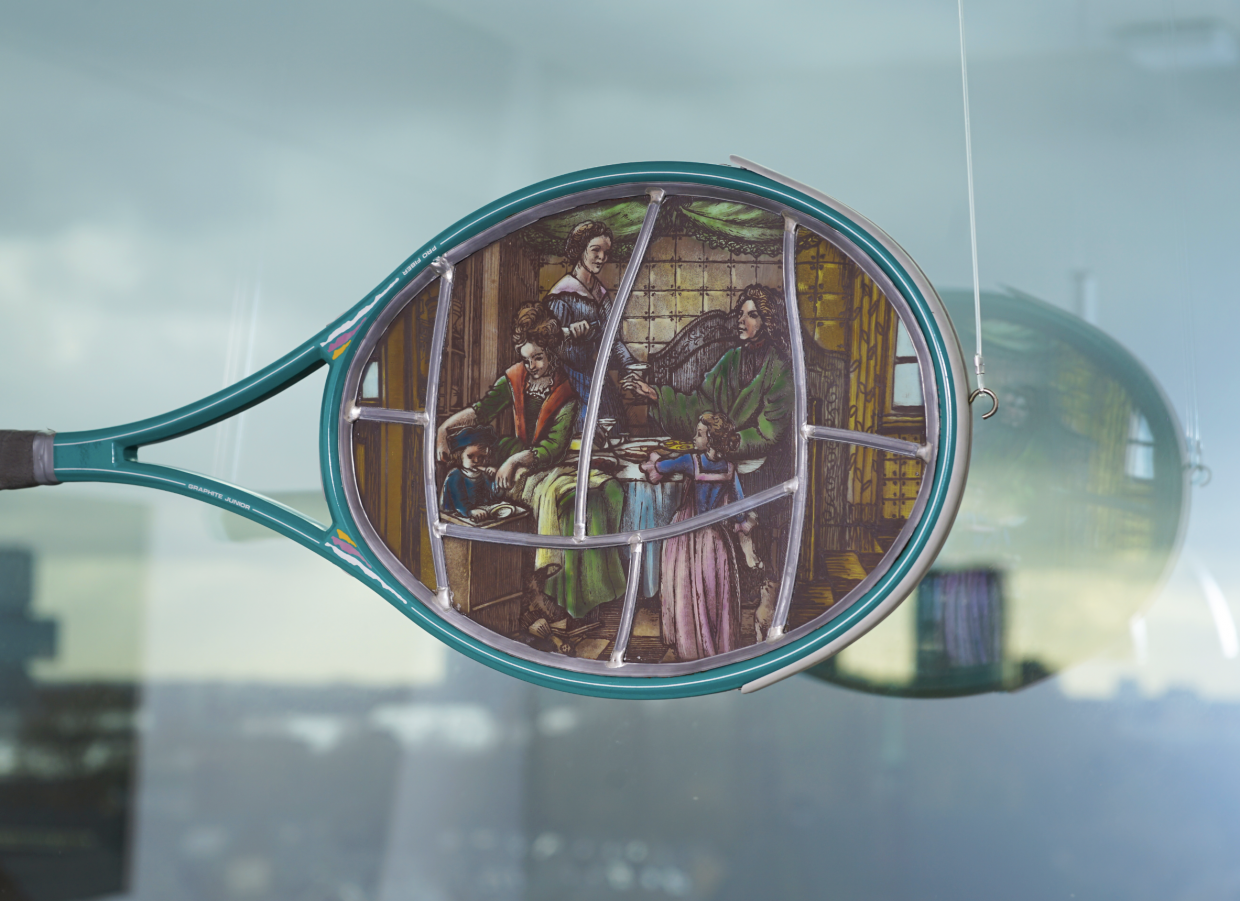

Wim Delvoye (b. 1965)
Slazenger OMS

For many years already, Wim Delvoye has been the highly successful enfant terrible of the Belgian art world. He first gained international recognition by tattooing pigs with world-famous logos, such as those of Harley Davidson and Louis Vuitton. Delvoye sedates and then tattoos the pigs at his “Art Farm”. After their (natural) deaths, the skins are stretched over a frame and shown in museums. Delvoye also created so-called Cloaca-installations, machines that recreate the food/excrement cycle. These works are also widely shown in museums.
His first stained glass works date from the late 1980s, but Delvoye has also used the technique at several later moments throughout his career. The tennis racket comes with its original Slazenger sleeve and the title of the work is synonymous with the type of racket. The stained glass was actually created by Delvoye himself. He could have chosen to reuse second-hand glass but by creating it himself, he determines the aesthetics and content of his art. In his studio, Delvoye recreates particular, somewhat mundane and old-fashioned Dutch scenes. In this case, he portrays a typical 17th/18th century domestic scene with a father, mother, two children and a wet nurse gathered around a dinner table.
Delvoye’s entire oeuvre fits into the Belgian surrealist-absurdist art tradition, with René Magritte and Marcel Broodthaers as leading examples. Humour is always present in the background but never dominant. Holding the racket, you can imagine the physical fragility of the stained glass when you practice a powerful forehand. Actually playing tennis with this racket would be absurd.
After creating a series of tennis rackets between 1988-1989, Delvoye translated the same idea to larger works: he used indoor football goals and swapped the nets for stained glass featuring Bruegel-like scenes. You are immediately struck by the strange combination of football and fragile glass.
Delvoye always plays with proportions and contradictions; floor mosaics of salami or cooked sausage, circular saws decorated with Delftware, heavy concrete mixers and shovels built from Gothic laser-cut Meccano parts. It is clear that everything has been well thought out, and at the same time, you never feel like you’re looking at a gimmick or something made in an habitual or unimaginative way.

